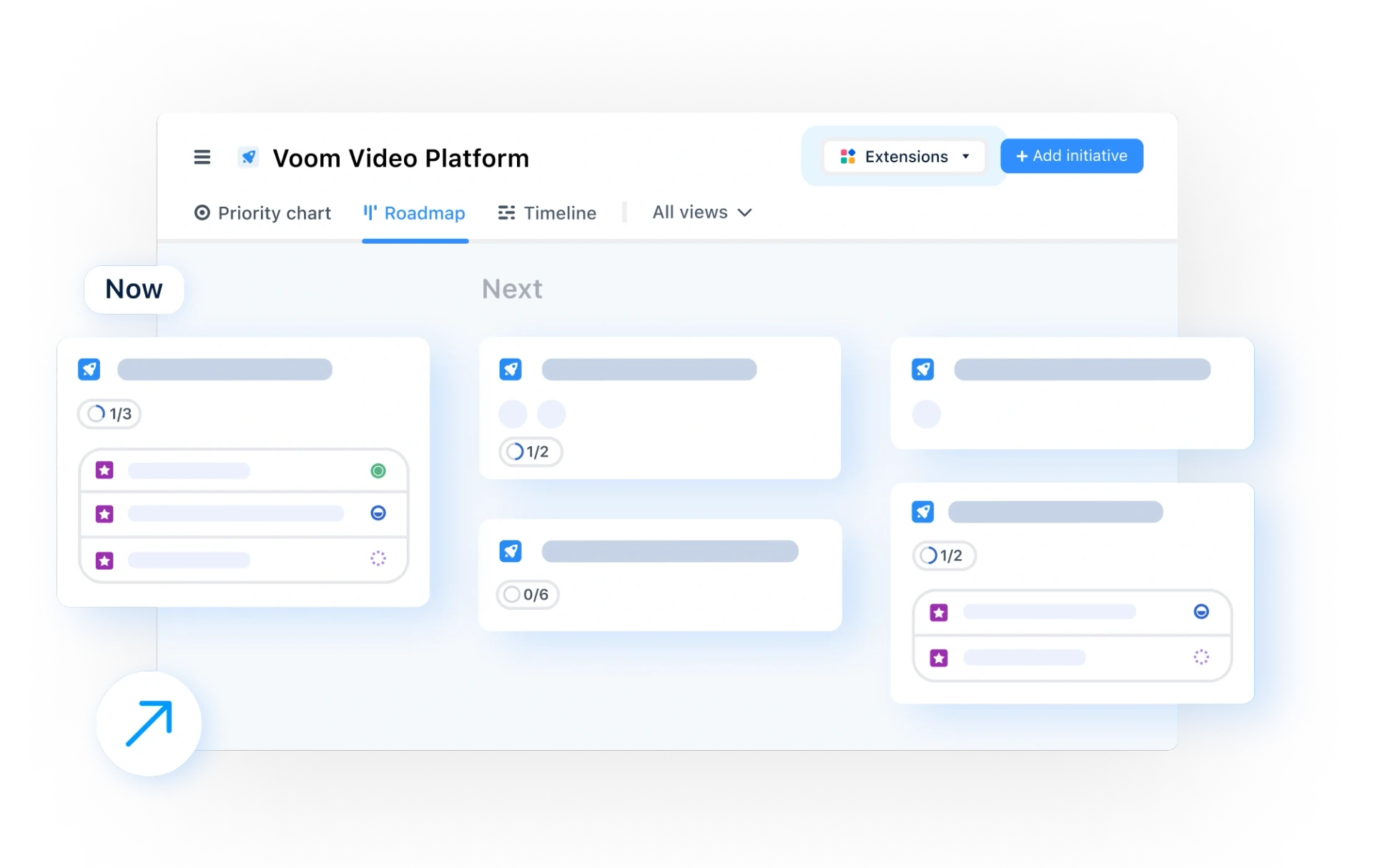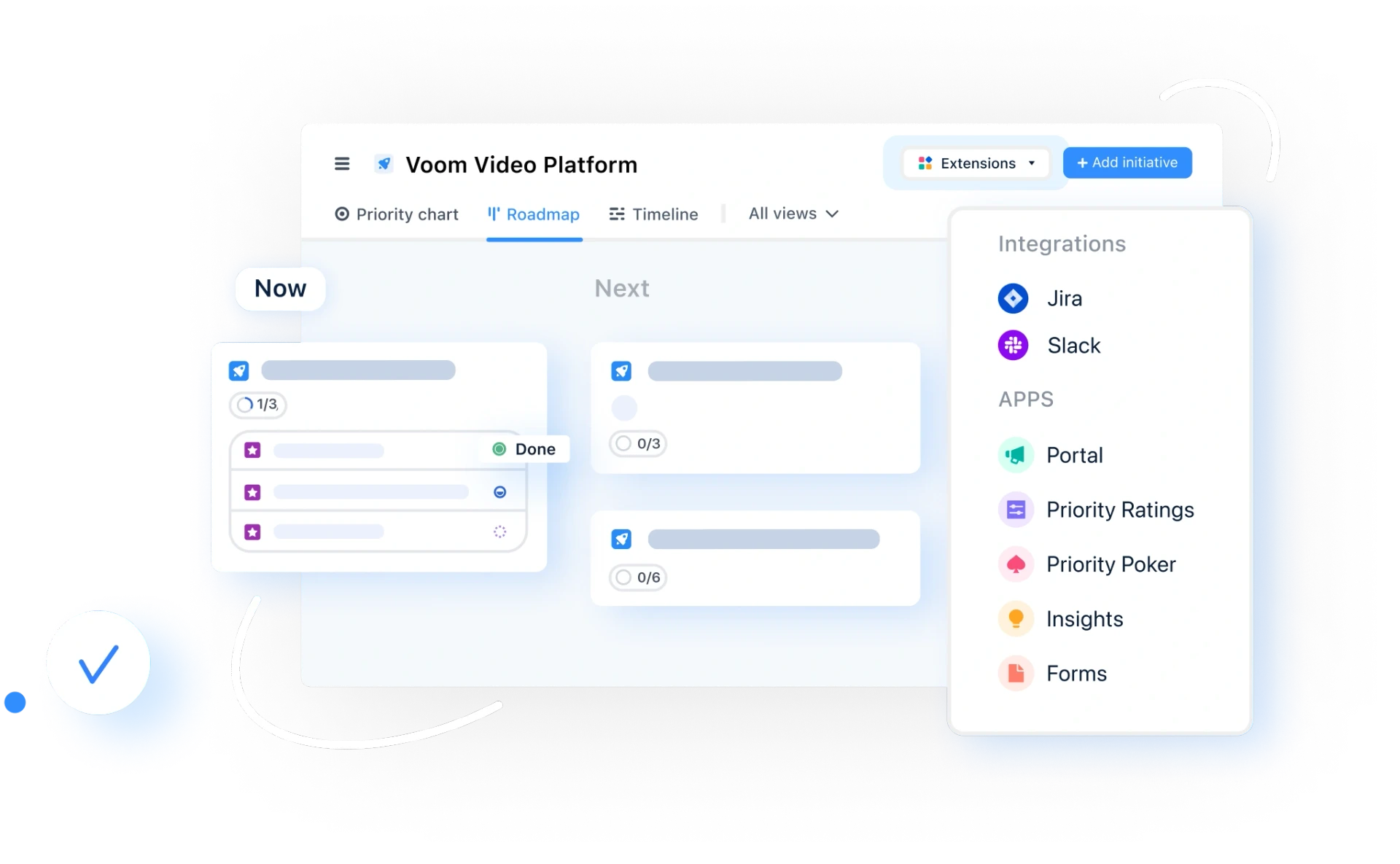Roadmap
What is a Roadmap
Definition of a Roadmap
A roadmap is a high-level strategic overview of a significant business initiative. Roadmaps are typically used to manage the development of a new product or the execution of a company-wide project.
Product managers and project managers both rely on roadmaps to give teams a clear strategic overview, helping keep everyone aligned.
However, product roadmaps and project roadmaps differ sharply in the way they treat timelines and deadlines.
A product roadmap timeline is much more dynamic and more changeable, allowing for shifts or updates as priorities change.
What do roadmaps do?
Roadmaps act as a single reference point to ensure everyone on a team shares the same understanding of the goals driving an initiative.
Having a central overview everyone can reference makes it easier to alter or update the priority of tasks and milestones when changes to an initiative are required.
The roadmap is a high-level overview allowing the whole team and other stakeholders to assess their current position within the whole context of the project or product development.
This overview should not be overly detailed, focusing instead on being able to be understood quickly. It’s not a task list explaining how to achieve each task but rather shows the steps needed to achieve a successful outcome.
Because this is an overview, roadmaps will usually show the key milestones in place of detailed tasks. This allows you to easily measure progress towards completeion and helps clarify what the team is working towards in both the short-term and the long-term.
These milestones are organized, and their relationships are defined to show dependencies. These milestones provide a schedule for the entire roadmap and delivery dates.
Roadmaps should also include the parties responsible for completing each milestone and the estimate resources allocated to each milestone. Resources can include budgets, workers, and effort.
How are project roadmaps and product roadmaps different?
Although project roadmaps and product roadmaps can look similar, they are fundamentally different in what they track and how they are used.
Project roadmaps plan and track progress towards a fixed objective.
There are strict start and end dates that define the boundaries of a project. When all the tasks are finished, the project is over.
The project’s tasks and milestones are defined before the project begins and agreed upon as the best way to fulfill the project’s stated objectives.
The project’s success is measured by how well it fulfills the final objectives.
Tasks are prioritized by their order in the timeline and how many other tasks are dependent on them.
Product roadmaps track the development of goods or services.
The roadmaps are open-ended because product development may never finish.
Tasks are less important than features. The features can change over time as the team gains user feedback and features are added, edited, or removed.
Objectives are based on the business goals for the product and the organization. Success is measured by how well the business goals are met.
Tasks are prioritized based on how valuable users find the features and the business goals they support.
So, can product managers ignore project plans? Not really. Their product plan may include many mini project plans defining sprints or feature releases.
What are the benefits of having a roadmap?
Roadmaps help keep team members on the same page in terms of an initiative’s scope, objectives, and timeline. They also help those in charge communicate objectives and share status updates quickly.
What are the drawbacks of having a roadmap?
If roadmaps aren’t updated frequently, initiatives can veer off-course, and unplanned dependencies cause projects to derail.
Roadmaps become counter-productive if they aren’t used as a living working document. That’s why it’s so important to use a dedicated roadmapping tool that makes it simple and intuitive to share with all stakeholders in real-time.

General FAQ

Glossary categories
Build great roadmaps

Experience the new way of doing product management








